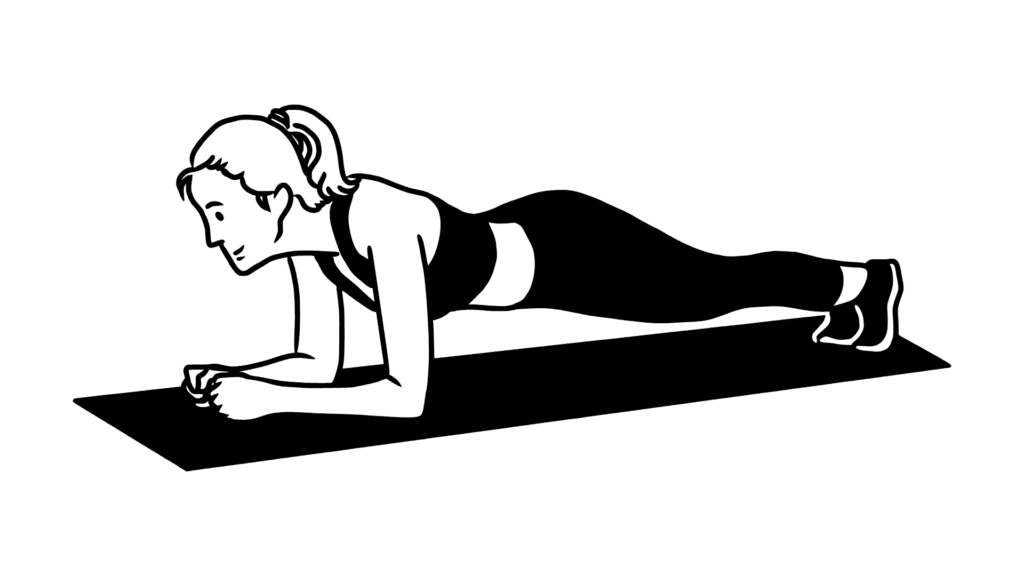How to Pair Protein Intake with Your HIIT Workouts

You might be surprised that eating protein 45 minutes after your HIIT workout can maximize your muscle recovery.
Young men who kept taking 2.4g of protein per kilogram of body weight during HIIT training gained much more lean muscle mass than those who consumed half that amount. The right protein timing and amounts before high intensity workout sessions can be challenging to figure out.
Our body needs 1.2 to 2.0 grams of protein per kilogram of body weight each day when you do HIIT workouts. This amount is higher by a lot compared to what most people need. The recommended 3-to-1 carbohydrate-to-protein ratio is a vital part of post-workout nutrition, which makes proper protein intake even more significant.
Want to learn the perfect timing for your protein intake around HIIT sessions? Let’s explore everything about maximizing your workout results through smart protein consumption.
Understanding Protein’s Role in HIIT
HIIT workouts create tiny tears in muscle tissue that kick off a complex process of protein synthesis and breakdown. The relationship between HIIT and protein metabolism can help you get better results from your workouts.
How HIIT affects muscle protein
HIIT workouts cause major changes in muscle protein metabolism. HIIT boosts muscle protein synthesis, especially in mitochondrial proteins that your body needs to produce energy. On top of that, it activates important enzymes that help with protein metabolism and glucose transport.
HIIT boosts the production of proteins needed to build mitochondria while changing proteins that control muscle contractions. The workout also changes calcium-sensitive proteins that are vital to muscle contraction efficiency.
The latest research points to significant changes in muscle ultrastructure from HIIT. Scientists spotted higher myofibrillar muscle protein synthesis 24 and 48 hours after a HIIT session. HIIT stands out from other types of exercise because it’s the only one that gets more sarcoplasmic muscle protein synthesis.
Why timing matters for results
Several factors affect how protein timing and HIIT performance work together. A study by healthline shows that protein synthesis rates stay high for 24 hours after HIIT exercise. All the same, smart protein intake can speed up recovery and adaptation.
Eating 20 grams of protein every three hours works best to stimulate muscle protein synthesis. It is recommended that you should aim for 0.4 grams of protein per kilogram of body weight right after exercise to maximize recovery.
The science of protein timing connects directly to muscle tissue repair. Your body breaks down protein into amino acids that work as building blocks for muscle repair. These amino acids help fix the microscopic damage from intense exercise intervals.
Combining essential amino acids (EAA) with HIIT training leads to better results in:
- Thigh lean mass (+0.22 ± 0.05 kg)
- Muscle cross-sectional area (+2.64 ± 0.53 cm²)
- Overall muscle quality
People who combine HIIT with essential amino acids consistently show higher protein synthesis, breakdown, and flux measurements compared to those who just do HIIT. This highlights why proper protein timing around your workouts matters so much.
Your previous meal affects how protein timing works.This indicates that what you eat before exercise changes how urgently you need protein afterward. To cite an instance, see how eating a protein-rich meal 1-2 hours before training can serve as both pre and immediate post-exercise nutrition.
What to Eat Before a HIIT Workout
Protein timing that lines up with your HIIT workouts is a vital part of muscle repair and growth. The food you eat and its timing can make a big difference in how well you perform. While convenient, relying on quick protein sources from processed food can hinder your fitness progress. Prioritizing whole food protein sources and strategic timing will yield far superior results.
Best protein sources pre-workout
The right protein sources before HIIT training need careful thought. Studies show that essential amino acids (EAAs) help boost post-exercise protein synthesis. Here are some quality protein options to think over:
- Lean meats: turkey, chicken breast, and lean beef
- Dairy products: Greek yogurt, cottage cheese
- Plant-based options: tofu, quinoa
- Eggs and egg whites
- Fish varieties
Sample pre-workout protein meals
Your meal’s composition depends on its timing. Research backs eating a balanced mix of carbs, protein, and fat about 2-3 hours before you exercise. These meal combinations work well:
2-3 hours before HIIT:
- Grilled chicken with sweet potato and steamed vegetables
- Quinoa salad with chickpeas
- Oatmeal with berries and almond butter
- Salmon with brown rice
Within 60 minutes of training:
- Greek yogurt with honey
- Protein smoothie (without excess fiber)
- Banana with a small amount of nut butter
- Low-fat yogurt with minimal toppings
Timing your pre-workout protein
Smart protein timing can boost muscle protein synthesis and so its a must that your ideal timing should match your workout schedule:
2-3 hours before HIIT: A complete meal with 6g or more of essential amino acids works best. This gives your body time to digest and absorb nutrients properly.
60 minutes before workout: Pick proteins that digest easily and keep portions moderate. High-fat or high-fiber combinations might upset your stomach.
10-15 minutes before training: Small, easy-to-digest protein sources are your best bet. This helps you avoid stomach issues during intense intervals.
Night before morning HIIT: Mix complex carbs with protein. This combo keeps energy ready for morning workouts.
Note that everyone responds differently to pre-workout nutrition. Try different timings and combinations to find what suits your body best. The “anabolic window” isn’t just 30 minutes – it’s actually much longer.
Protein Intake During HIIT Sessions
Challenges of what we used to believe about protein consumption during HIIT workouts is that your body must start recovering from the very first rep you do.
Should you consume protein while training?
Taking protein before and during exercise gets your muscles building protein throughout resistance and endurance activities. This means you don’t have to wait until after your workout to start the recovery process.
Eating protein with carbs during long workouts helps your body’s protein balance. While protein alone might not make you perform better right away, it serves these vital roles:
- Stops muscle breakdown
- Keeps building muscle protein
- Boosts how your muscles adapt
Using stable isotope methods proves that taking protein before and during resistance exercise gets your muscles building protein by a lot. This gives you more time with raised muscle protein synthesis.
To get the best results, research suggests taking 3.6g of essential amino acids blend, including:
- L-leucine
- L-lysine HCl
- L-valine
- L-isoleucine
- L-arginine
- L-threonine
Quick protein options during breaks
The right protein choice between HIIT intervals is vital. Here are some options that your body can digest quickly without upset:
- Essential Amino Acid (EAA) Supplements:
- Mix with 8-12 oz water
- Take 30 minutes before exercise
- Have another serving during workout breaks
- Protein-Carbohydrate Combinations:
- Keep a 3:1 carbohydrate-to-protein ratio
- Pick fast-absorbing options
- Go for liquid forms that digest better
According to NCBI, young men who ate 2.4g of protein per kilogram of body weight over 4 weeks while doing HIIT cycling gained much more lean body mass (+1.2kg) and dropped more fat (-4.8kg) than those who ate 1.2g/kg protein.
It is found that taking protein during longer endurance workouts helps your body’s protein balance by building more protein and breaking down less. Taking protein during HIIT sessions, especially ones lasting over 3-5 hours, helps muscle recovery and makes training more effective.
Your body notices workout damage from the first rep. Starting recovery mid-workout by taking protein helps you:
- Feel less sore after exercise
- Recover faster
- Adapt better to training
- Keep building muscle protein
Knowing your personal protein needs matters. Active people doing high-intensity workouts need about 1.4-1.7g/kg of protein daily to maintain their protein balance. This is more than the standard daily recommendation of 0.80g/kg protein.
What to Eat After HIIT Workouts
We used to believe in the post-workout “anabolic window” where your muscles stay receptive to protein for up to 24 hours after a HIIT session.
Post-workout protein window
The optimal window for protein intake goes well beyond the commonly accepted 30-60 minute timeframe. Your body can effectively use protein up to 5-6 hours after exercise, depending on when you ate before working out. This changes everything we thought we knew about post-HIIT nutrition.
High Impact Plant Protein is an excellent choice for post-HIIT recovery. If you’re looking for a safe, effective way to boost your muscle recovery, High Impact Plant Protein is a top choice. Packed with vegan proteins, digestive enzymes, and essential nutrients, it promotes lean muscle and bone health.
Read the full High Impact Plant Protein review to learn more about its benefits and how it can help you achieve your muscle health goals!
A complete meta-analysis shows that eating protein within an hour after resistance exercise has a small but vital effect on muscle growth. The impact becomes less noticeable when looking at total daily protein intake, which suggests your overall protein consumption matters more than exact timing.
The best results come from consuming:
- 20-40 grams of protein post-workout
- 0.4-0.5 grams of protein per kilogram of lean body mass
- 3.6-5.5 grams of carbohydrates per pound of body weight daily
Recovery meal examples
Your post-HIIT nutrition should combine quality protein sources with complex carbohydrates. Here are some options for recovery meals:
- Complete Protein Meals:
- Grilled chicken with roasted vegetables and rice
- Salmon with sweet potato
- Egg omelet with avocado on whole-grain toast
- Quinoa bowl with berries and nuts
Quick Recovery Options:
- Greek yogurt (17 grams protein per 170-gram serving)
- Cottage cheese with fruits
- Tuna with whole-grain crackers
- Protein shake with banana
Protein shakes vs whole foods
The difference between protein shakes and whole foods plays a vital role in optimizing post-HIIT recovery. Whole food proteins typically absorb more slowly than protein supplements. Each option brings unique benefits to your post-workout nutrition.
Protein Shakes Benefits:
- Fast absorption rate works great for immediate post-workout recovery
- Easy way to hit daily protein goals
- More protein without extra calories
Whole Foods Advantages:
- Extra nutrients beyond just protein
- Fiber and other elements slow down digestion
- Amino acids release gradually
Using both protein shakes and whole foods will give you optimal nutrient delivery. You might want to drink a protein shake right after working out and eat a whole-food meal within an hour.
People who train while fasting need immediate post-workout protein. If you ate protein-rich food 1-2 hours before training, you don’t need to rush your post-workout protein.
Here’s how to boost your recovery:
- Eat 0.14 to 0.23 grams of protein per pound of body weight post-workout
- Mix fast and slow-digesting proteins
- Add carbohydrates with protein to refill glycogen better
- Drink enough water to help nutrient transport
Adjusting Protein Based on HIIT Type
Your protein needs change by a lot based on your HIIT workout type and intensity. According to studies conducted by NCBI, people who do cardio training need different amounts of protein compared to those who do strength training.
Strength-focused HIIT protein needs
People doing strength-based HIIT sessions need more protein because their muscles break down more. You need 1.4-2.0 grams of protein per kilogram of body weight to help your muscles repair and grow during strength-focused HIIT training.
For strength-based HIIT workouts:
- Eat 20-40 grams of high-quality protein per meal
- Spread your protein intake across 4-7 meals daily
- Choose complete protein sources with essential amino acids
Cardio-based HIIT protein needs
You need less protein for cardio-focused HIIT compared to strength workouts. People doing cardiovascular HIIT should eat between 1.2-1.7 grams of protein per kilogram of body weight daily.
Scientists using the Indicator Amino Acid Oxidation technique found that recreational athletes doing shuttle running drills need 1.4-1.7 grams of protein per kilogram daily to maintain protein balance. Your carbohydrate intake plays a vital role in keeping blood glucose levels stable during cardio-based HIIT sessions.
Mixed modal HIIT requirements
Mixed modal HIIT combines both strength and cardio elements and has its own protein needs. People doing this type of training benefit from eating between 1.6-2.0 grams of protein per kilogram of body weight daily.
The sort of thing I love comes from recent studies of high-protein diets during 16 weeks of concurrent training. Eating 1.6 grams of protein per kilogram daily was enough to maximize:
This shows that eating more than 1.6 grams of protein per kilogram didn’t help mixed modal training results. Spreading your protein throughout the day works better than eating large amounts at once.
It is highly recommended that you should adjust your protein based on your workout goals. If you want to lose fat, keep protein between 1.2-1.7 grams per kilogram daily. For muscle gain, you need slightly more – about 1.4-2.0 grams per kilogram.
Protein timing really matters as much as quantity. The way spreading protein throughout your day affects how well your training works. Of course, this helps you plan better nutrition strategies for different HIIT workouts.
Conclusion
Protein intake is the life-blood of successful HIIT training. Smart protein timing – before, during, and after workouts – improves your training results and recovery by a lot.
Your HIIT workout style determines how much protein you need. You’ll need higher amounts (1.4-2.0g/kg) for strength-focused sessions. Cardio-based HIIT needs nowhere near as much (1.2-1.7g/kg). Success comes from meeting these requirements and timing your intake well throughout the day.
Quality matters just as much as quantity when it comes to protein. Pick complete protein sources and think about both whole foods and supplements. For many, especially those with tight schedules or high protein needs, protein powder can be an incredibly convenient way to supplement their intake. Your specific workout goals should guide your intake adjustments. These protein strategies, including the strategic use of protein powder, will help you get the most from your HIIT workouts and achieve better training results.


